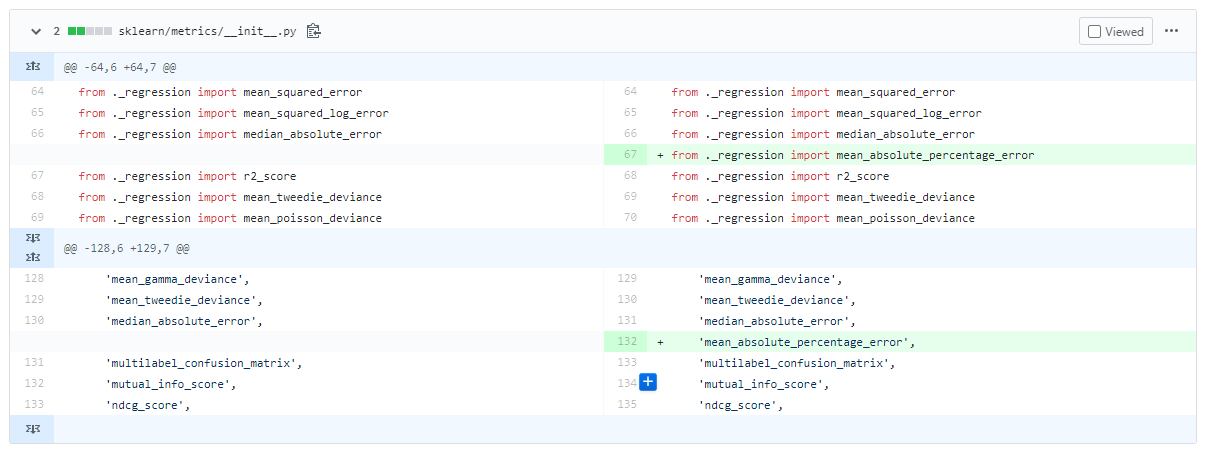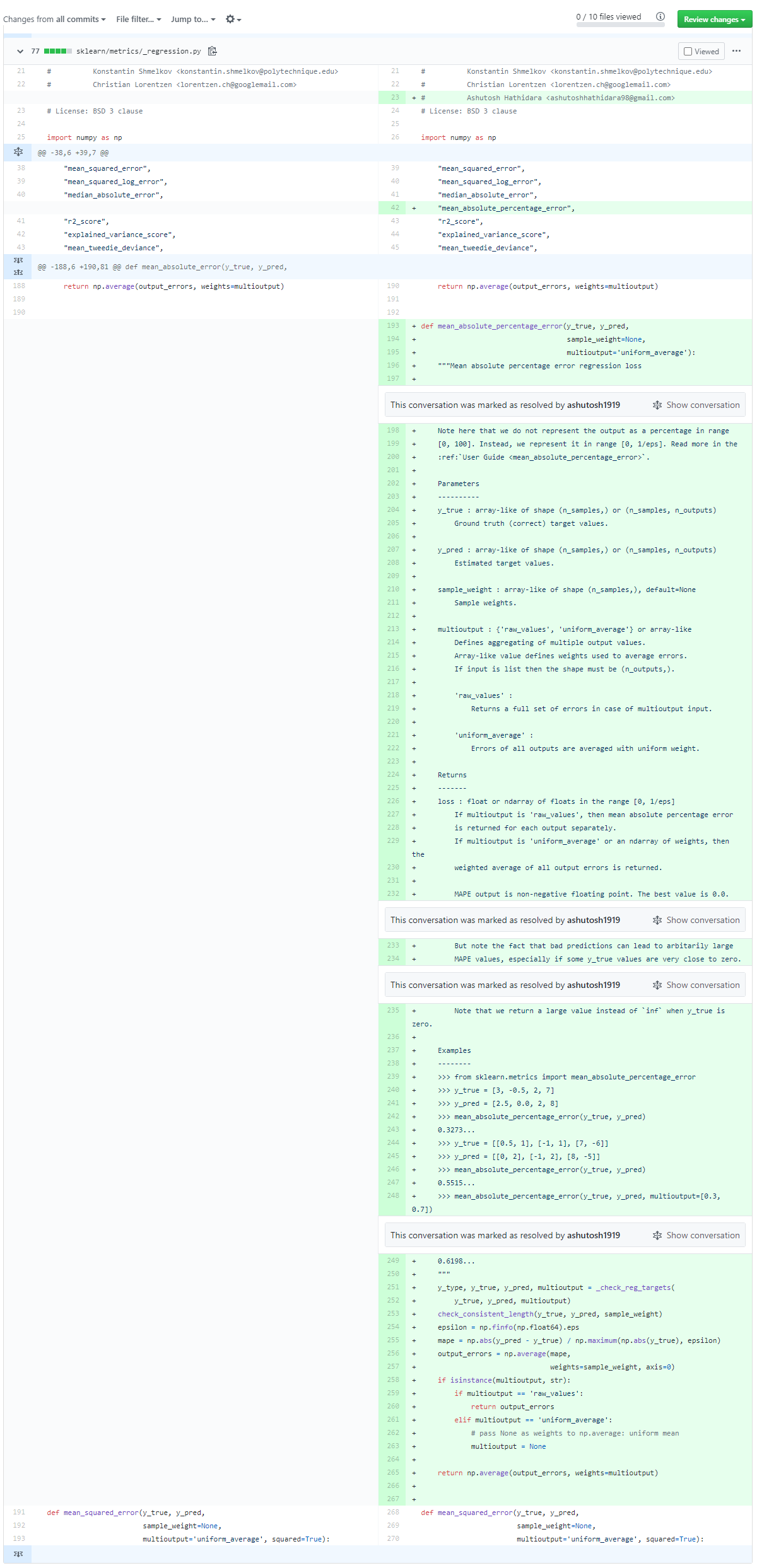1
2
3
4
5
6
7
8
9
10
11
12
13
14
15
16
17
18
19
20
21
22
23
24
25
26
27
28
29
30
31
32
33
34
35
36
37
38
39
40
41
42
43
44
45
46
47
48
49
50
51
52
53
54
55
56
57
58
59
60
61
62
63
64
65
66
67
68
69
70
71
72
73
74
75
76
77
78
79
|
"max_error",
"mean_absolute_error",
"mean_absolute_percentage_error",
"mean_squared_error",
"mean_squared_log_error",
"median_absolute_error",
return np.average(output_errors, weights=multioutput)
def mean_absolute_percentage_error(y_true, y_pred,
sample_weight=None,
multioutput='uniform_average'):
"""Mean absolute percentage error regression loss
Note here that we do not represent the output as a percentage in range
[0, 100]. Instead, we represent it in range [0, 1/eps]. Read more in the
:ref:`User Guide <mean_absolute_percentage_error>`.
Parameters
----------
y_true : array-like of shape (n_samples,) or (n_samples, n_outputs)
Ground truth (correct) target values.
y_pred : array-like of shape (n_samples,) or (n_samples, n_outputs)
Estimated target values.
sample_weight : array-like of shape (n_samples,), default=None
Sample weights.
multioutput : {'raw_values', 'uniform_average'} or array-like
Defines aggregating of multiple output values.
Array-like value defines weights used to average errors.
If input is list then the shape must be (n_outputs,).
'raw_values' :
Returns a full set of errors in case of multioutput input.
'uniform_average' :
Errors of all outputs are averaged with uniform weight.
Returns
-------
loss : float or ndarray of floats in the range [0, 1/eps]
If multioutput is 'raw_values', then mean absolute percentage error
is returned for each output separately.
If multioutput is 'uniform_average' or an ndarray of weights, then the
weighted average of all output errors is returned.
MAPE output is non-negative floating point. The best value is 0.0.
But note the fact that bad predictions can lead to arbitarily large
MAPE values, especially if some y_true values are very close to zero.
Examples
--------
>>> from sklearn.metrics import mean_absolute_percentage_error
>>> y_true = [3, -0.5, 2, 7]
>>> y_pred = [2.5, 0.0, 2, 8]
>>> mean_absolute_percentage_error(y_true, y_pred)
0.3273...
>>> y_true = [[0.5, 1], [-1, 1], [7, -6]]
>>> y_pred = [[0, 2], [-1, 2], [8, -5]]
>>> mean_absolute_percentage_error(y_true, y_pred)
0.5515...
>>> mean_absolute_percentage_error(y_true, y_pred, multioutput=[0.3, 0.7])
0.6198...
"""
y_type, y_true, y_pred, multioutput = _check_reg_targets(
y_true, y_pred, multioutput)
check_consistent_length(y_true, y_pred, sample_weight)
epsilon = np.finfo(np.float64).eps
mape = np.abs(y_pred - y_true) / np.maximum(np.abs(y_true), epsilon)
output_errors = np.average(mape,
weights=sample_weight, axis=0)
if isinstance(multioutput, str):
if multioutput == 'raw_values':
return output_errors
elif multioutput == 'uniform_average':
multioutput = None
return np.average(output_errors, weights=multioutput)
def mean_squared_error(y_true, y_pred,
sample_weight=None,
|

